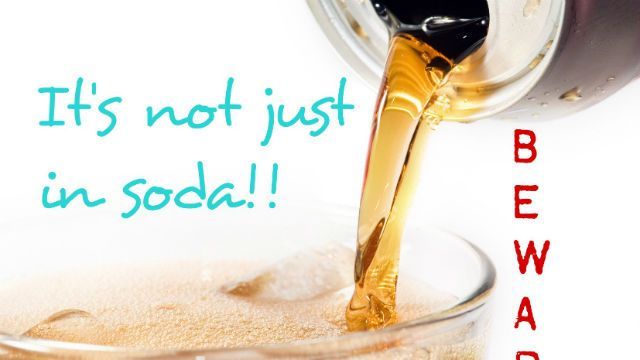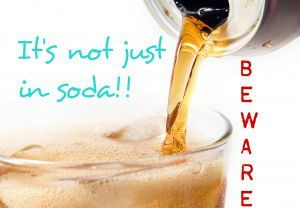
Fact: Over 13 million youth in America are obese, and childhood obesity has quadrupled in the last 40 years.
Fact: Over 70 percent of obese youth will be obese adults with an increased risk of diabetes, hypertension, heart disease and cancer.
Fact: The American Heart Association projects that over 40 percent of Americans will suffer from heart disease by 2030. Today that number is almost 37 percent.
Fact: Today’s youth may be the first generation in the history of our country with a shorter lifespan than their parents.
Fact: One of the most powerful drivers of the obesity epidemic is an abundance of cheap, nutritionally void foods sweetened by the synthetic and highly dangerous sugar substitute, high fructose corn syrup.
The preferred sweetener
The sweetener industry favors high fructose corn syrup, noting that it enhances flavor, preserves food and retains moisture. The question we have to ask is at what cost?
High fructose corn syrup was first invented in the 1960s and began to be heavily produced in the 1970s, shortly after the USDA ended controls on wheat, soy and corn production. This change in policy encouraged farmers to grow as much of these crops as possible. To make matters worse, the new policy came with hefty subsidies to farmers who would grow these crops.
Since 1995, over 19 billion dollars in subsidies has gone to crops that are used to produce nutritionally void products such corn sweeteners, corn starch and soy oils. In comparison, no subsidies have been paid for fruit or vegetable farmers who are growing healthy and nutritious crops.
Over 40 percent of the non-calorie sweeteners used in the United States are made from high fructose corn syrup. Drinks containing high fructose corn syrup have decreased almost 25 percent in price since 1985, while the price of wholesome vegetables and fruits has gone up almost 40 percent. What kind of message is this sending to consumers?
Right along with the increase in high fructose corn syrup use, the average American consumes 600 more calories per day than they did in 1970. Calories derived from fruits and vegetables are 100 percent more expensive than those derived from products made with high fructose corn syrup. This, along with the fragile economy, does not make it any easier for families to make wise food choices.
High fructose corn syrup is used to sweeten most processed foods. In fact, high fructose corn syrup is present in many foods that would not normally be thought of as sweet foods, such as salad dressing, mayonnaise, soup and numerous other products. High fructose corn syrup is also found in many drinks, such as soda, coffee drinks, high energy drinks and even some fruit drinks.
Consumption of high fructose corn syrup causes body-wide inflammation and obesity. In high doses it can literally punch holes in the intestinal lining, allowing nasty byproducts of toxic gut bacteria into your system and resulting in obesity, diabetes, cancer, heart disease, dementia and accelerated aging.
A double GMO hit
Food technology experts indicate that two enzymes used to make high fructose corn syrup, alpha-amylase and glucose-isomerase, are genetically modified to improve stability. In addition, high fructose corn syrup is most certainly made from GMO corn. This means the product you are consuming contains both GM enzymes and GM corn – a double hit for sure.
And mercury too??
You may be most familiar with mercury as coming from fish… however, there is a new contender in town that may surprise you. High fructose corn syrup contains contaminants, like mercury, that are not regulated by the FDA and are highly toxic. The Journal of Environmental Health published a report indicating that mercury is found in 9 of 20 samples containing high fructose corn syrup.
In a report entitled “Not So Sweet: Missing Mercury and High Fructose Corn Syrup,” researchers set out to determine in which high fructose corn syrup-containing foods mercury could be found. What they discovered was that mercury-laden high fructose corn syrup levels were highest amongst commercial food items such as snack bars, sloppy joe mix, chocolate syrup, chocolate milk, ketchup, soda and yogurt. In fact, when they tested 55 well known brands including Quaker, Hershey’s, Kraft, Yoplait, Smuckers and Hunts, they found one in three foods to contain high levels of mercury in the high fructose corn syrup.
Mercury is a potent brain toxin. Research demonstrates that when babies are exposed to mercury in the womb, their brains develop abnormally, hindering learning ability and reducing IQ. Science shows there is no safe level of mercury for unborn children.
Where does it hide?
Now, if we are going to try to avoid this dangerous substance, we must understand which foods we should avoid. While this may seem obvious – soda, candy, packaged cakes and cookies – there are a few more items you may need to watch out for:
Cottage cheese: While plain cottage cheese is void of high fructose corn syrup, those that have a topping are not. Make sure to carefully inspect packages of cottage cheese and flavored toppings if you wish to avoid high fructose corn syrup.
Canned soup: Even the most seemingly innocent vegetables soups can contain high fructose corn syrup. Read the label before you purchase any canned or microwaveable soup. One popular brand of tomato soup has HFCS as one of the top ingredients. Your best option is always to make your own.
Yogurt: Not all yogurt contains high fructose corn syrup, but as we reported in an earlier article, many brands of yogurt try to pull off looking healthy when they are nothing more than glorified junk food. Added sugar in the form of high fructose corn syrup is just one thing to be careful of. If you enjoy yogurt, consider learning how to make it yourself – it is a fun project that is well worth your time.
Baked beans: Beans are good for you; yes, but not when they contain high fructose corn syrup. Be leery of any brand of baked beans – check labels carefully, most contain added sugar in the form of high fructose corn syrup.
Ketchup: Making your own ketchup is also an easy project that will save you time and money. Although some brands of ketchup now state that they are sugar-free, be very careful – they may still contain a certain amount of added sugar (usually in the form of high fructose corn syrup). Look at the label very, very carefully for any added sugar.
Bread: Probably best to forgo conventional bread altogether. But, if you don’t, take the time to read the ingredient list – if it takes a magnifying glass to see everything in the list, best to leave the bread on the shelf. High fructose corn syrup is a common ingredient in many breads, crackers and baked goods. Best to make your own with gluten-free grains.
 Here are just a few more places where high fructose corn syrup hides:
Here are just a few more places where high fructose corn syrup hides:
-
Cough syrup
-
Salad dressing
-
Steak sauce
-
Breakfast cereals
-
Drink mixes
-
Ice cream
-
Jam
-
Marinades
-
Packaged snacks
Switching to a whole food diet, avoiding fast food when possible and paying very close attention to labels is necessary in this day and age in order to protect your health and the health of family members. Loose labelling laws and enforcement make it all too easy for food manufacturers to pull the wool over consumers’ eyes.
Always remember… ‘Caveat Emptor’ (let the buyer beware), and be safe.
-The Alternative Daily

